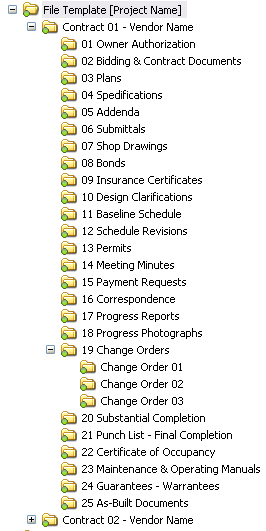Structure Better Projects: The Role of Construction Document Management in Success
Structure Better Projects: The Role of Construction Document Management in Success
Blog Article
Optimizing Task Collaboration: Designer's Ideal Practices in Building File Management
In the complex world of building jobs, the reliable management of building papers stands as a cornerstone for success. In the middle of this intricacy exists a vital inquiry: just how can designers simplify partnership procedures to enhance job end results?
Leveraging Cloud-Based Systems
Leveraging cloud-based platforms is a fundamental strategy for modern designers in optimizing building record management procedures. By transitioning from traditional paper-based systems to shadow solutions, architects can enhance collaboration, enhance paper access, and boost overall project effectiveness. Cloud-based platforms offer engineers the capacity to store, share, and upgrade building files in real-time, guaranteeing that all team members have accessibility to one of the most present details no matter their location. This accessibility promotes smooth interaction and sychronisation amongst task stakeholders, bring about fewer mistakes and hold-ups in the construction procedure.
In addition, cloud-based systems give a protected setting for storing delicate job details, using security, routine back-ups, and individual permission settings to secure data honesty. Designers can additionally benefit from the scalability of cloud solutions, enabling them to change storage capability and capability based upon job requirements. In general, leveraging cloud-based platforms empowers engineers to optimize their construction paper administration processes, driving higher cooperation, efficiency, and success in their jobs.
Carrying Out Version Control Systems
Having established the advantages of cloud-based platforms in building record monitoring, architects can currently improve their document control procedures by implementing Variation Control Solution. Variation Control Equipment (VCS) are important devices that track changes in documents, making certain that staff member are constantly collaborating with the most recent and most precise details. By executing VCS, designers can keep a centralized repository where all task papers are saved, enabling smooth partnership while decreasing the danger of mistakes and version problems.
This attribute is particularly important in building tasks where design models and alterations are common. This openness not just enhances responsibility yet likewise helps in fixing disagreements or discrepancies that might occur throughout the task lifecycle.
Establishing Communication Protocols
To make certain efficient and efficient job coordination, designers have to establish clear and durable communication procedures within their building file monitoring processes. This system could be a task management software, email strings, or cloud-based storage remedies.
In addition, interaction procedures must additionally consist of standards on exactly how to manage problems, change orders, and immediate issues that may develop throughout the project lifecycle. Developing an organized method to communication guarantees that all stakeholders get on the exact same web page, promotes transparency, and inevitably adds to the effective completion of the building task.
Utilizing BIM Software for Sychronisation
BIM software program plays a pivotal role in boosting control among project staff member in the building industry. Structure Details Modeling (BIM) facilitates cooperation by supplying a central system where designers, designers, specialists, and various other stakeholders can work together in a coordinated way. With BIM software application, task individuals can access and upgrade a common design which contains detailed information concerning the building layout, building parts, and project timetables.

Furthermore, BIM software application enables real-time get redirected here collaboration and communication amongst group participants, no matter of their physical place. Via cloud-based BIM systems, project stakeholders can access the most up to date task info, track adjustments, and make notified decisions quickly. Overall, leveraging BIM software for control improves job effectiveness, efficiency, and eventually results in successful job end results.
Ensuring Information Safety and Compliance
In the world of building record monitoring, securing data integrity and guaranteeing governing compliance are critical considerations for engineers and other job stakeholders. Engineers should apply durable safety and security actions to secure delicate job details from unauthorized access or breaches.

Verdict
In conclusion, engineers can enhance task partnership in building paper management by leveraging cloud-based systems, executing variation control systems, establishing communication methods, using BIM software application for coordination, and making certain data safety and compliance. These finest methods aid simplify the construction procedure, enhance communication amongst task stakeholders, and boost effectiveness in task distribution. By following these guidelines, designers can properly handle construction records and promote successful task end results.
Via BIM software application, job individuals can access and update a shared design that has in-depth information about the building layout, construction components, and task schedules.
With cloud-based BIM platforms, job stakeholders can access the most recent task info, track adjustments, and make educated choices promptly - construction document management. Overall, leveraging BIM software for sychronisation boosts job effectiveness, performance, and eventually leads to successful job end results
In conclusion, architects can optimize task cooperation in construction document management by leveraging cloud-based systems, carrying out version control systems, developing interaction procedures, making use of BIM software program for coordination, and making certain data protection and conformity. Learn More Here These best techniques aid enhance the building and construction procedure, improve interaction among task stakeholders, and improve effectiveness in job shipment.
Report this page